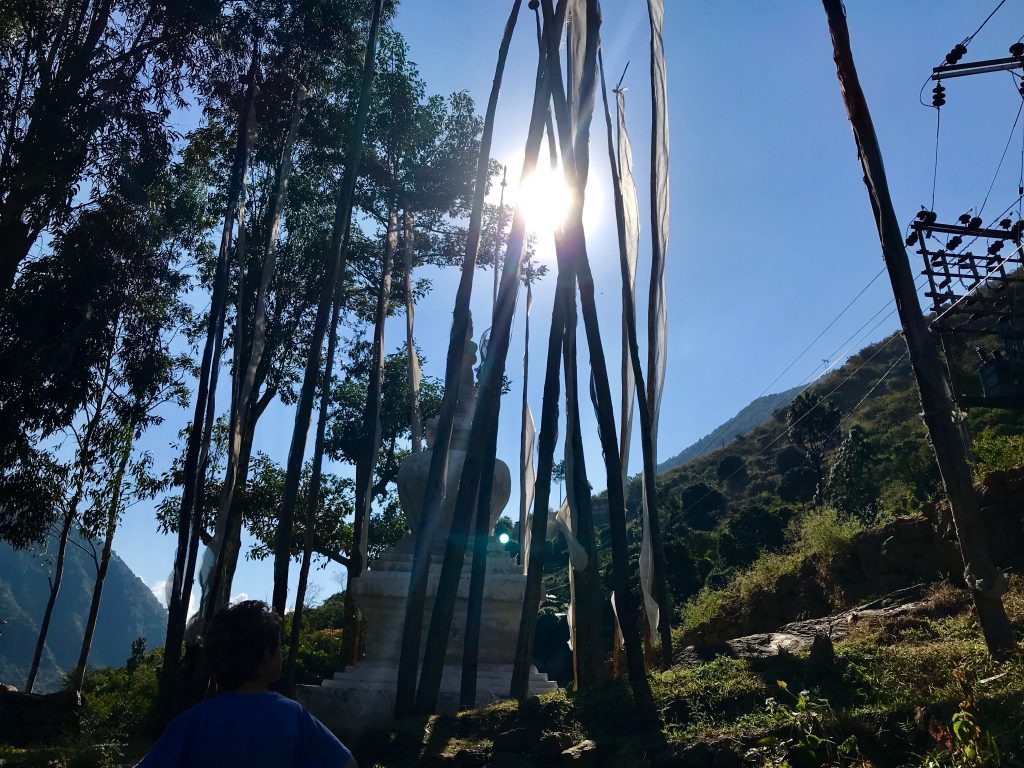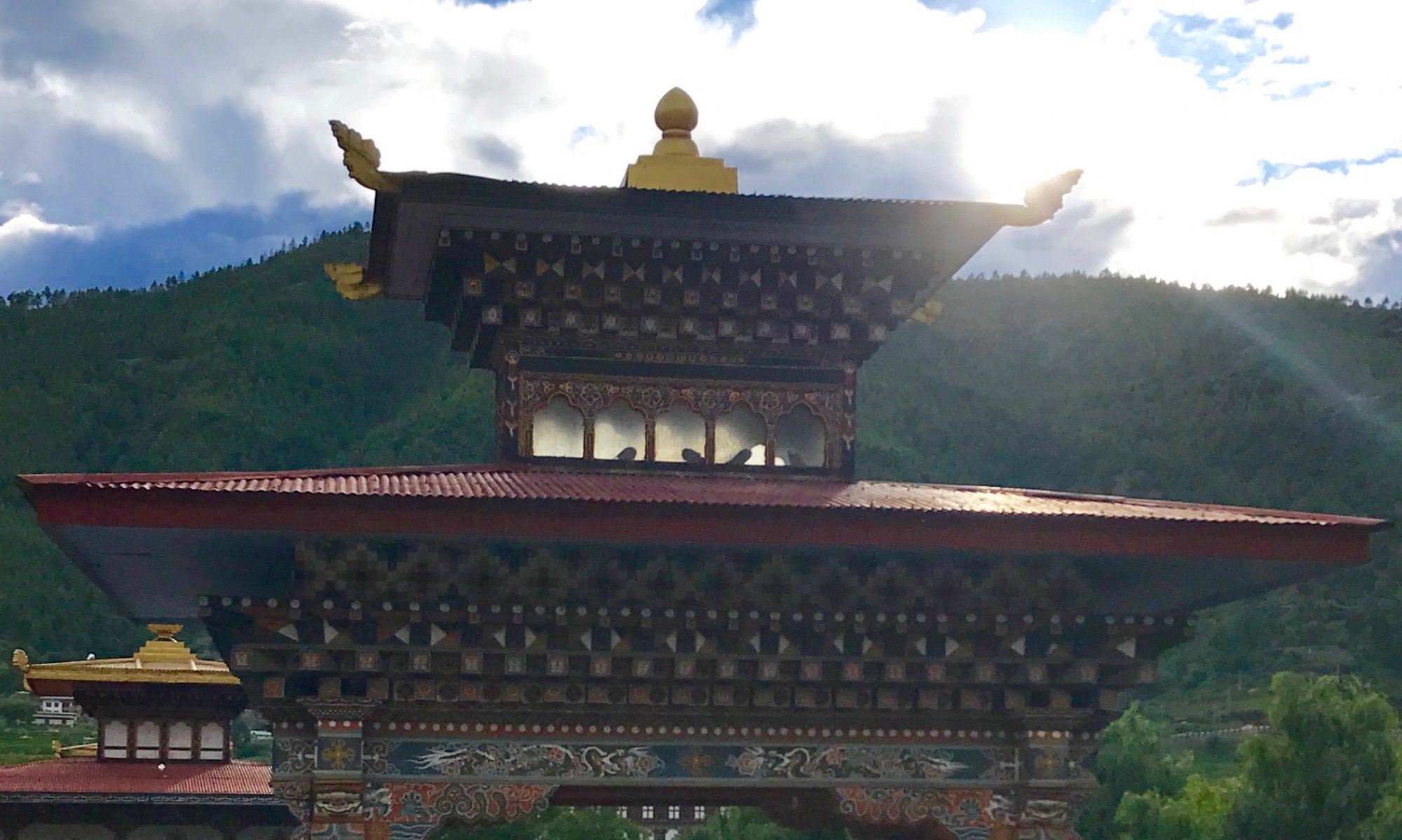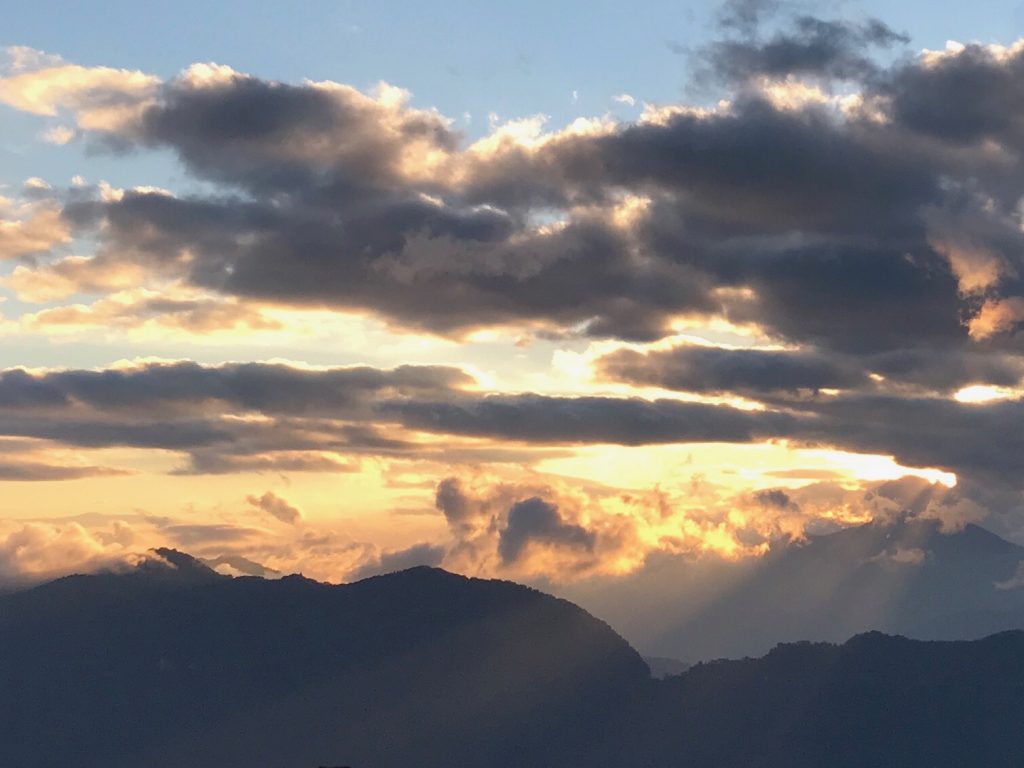
With classes completed and the students on “study leave,” we too took our leave of Kanglung and Yonphula for a few days. The YCC staff helped me hang some prayer flags over the entrance to the academic block: I’m hoping it will help my students on their exams.
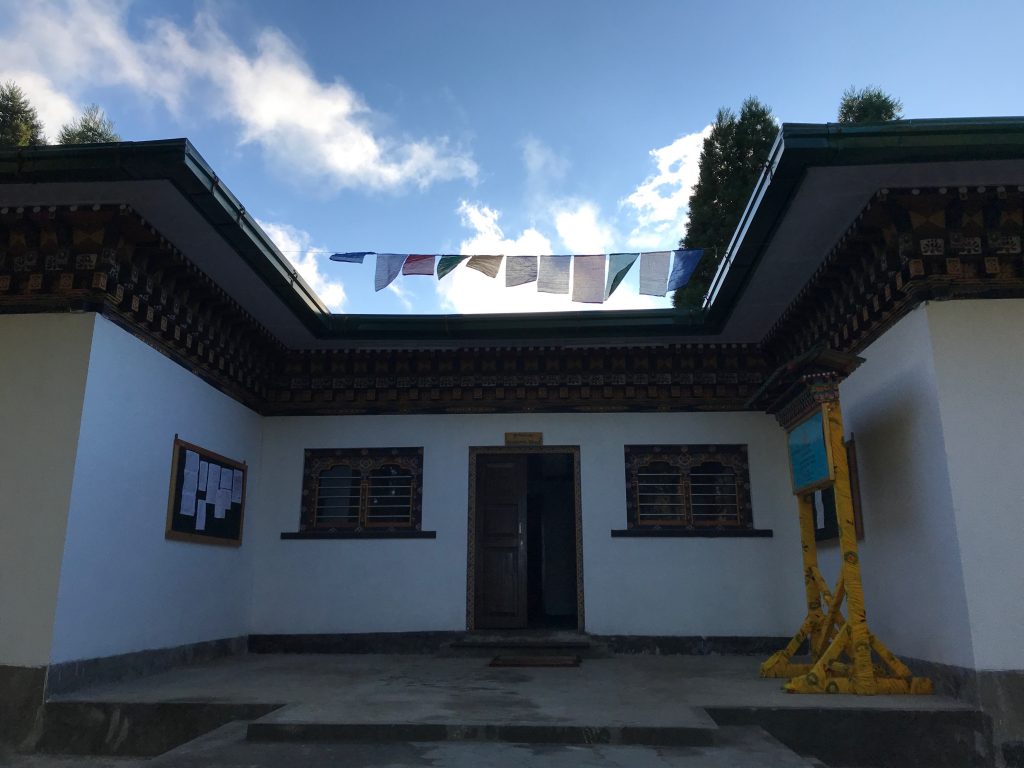
Ugyen Tshering explained that prayer flags should be hung in sight of mountains and rivers so that the winds and water will carry the prayers even further. A site that is too protected is not ideal: rather, the wind should wear the prayer flags out. At first, he said the prayer flags should be moved as soon as exams were over, but as they caught the breeze and waved merrily at us, he agreed that they might stay where they were.
Balamaguran was kind enough to loan us his car and Hap Tshering helped us sort out the necessary road permits, and we were on our way: to Trashi Yangtse, to try to film a mini-documentary of the Institute for Zorig Chusum there. We felt almost giddy: driving somewhere! Just the four of us! Independence!
The way things work here: if a tree falls down across the road as part of a landslide, you simply drive over the tree.
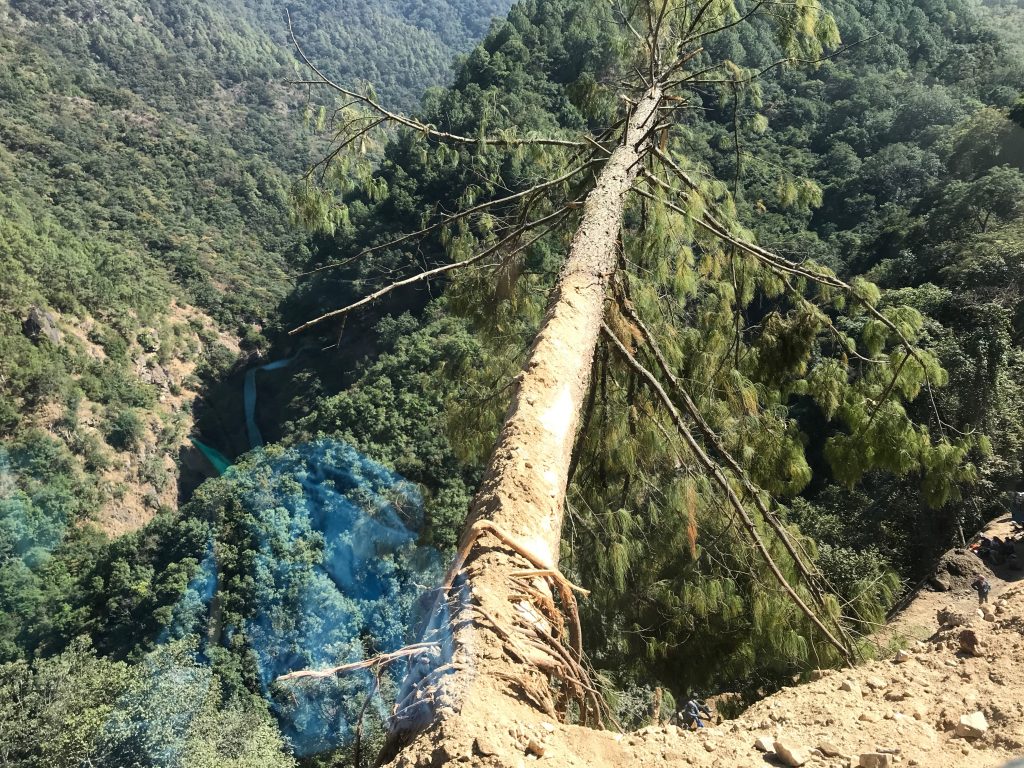
The road to Trashi Yangtse first runs along the Drangme Chuu, the longest river in Bhutan:
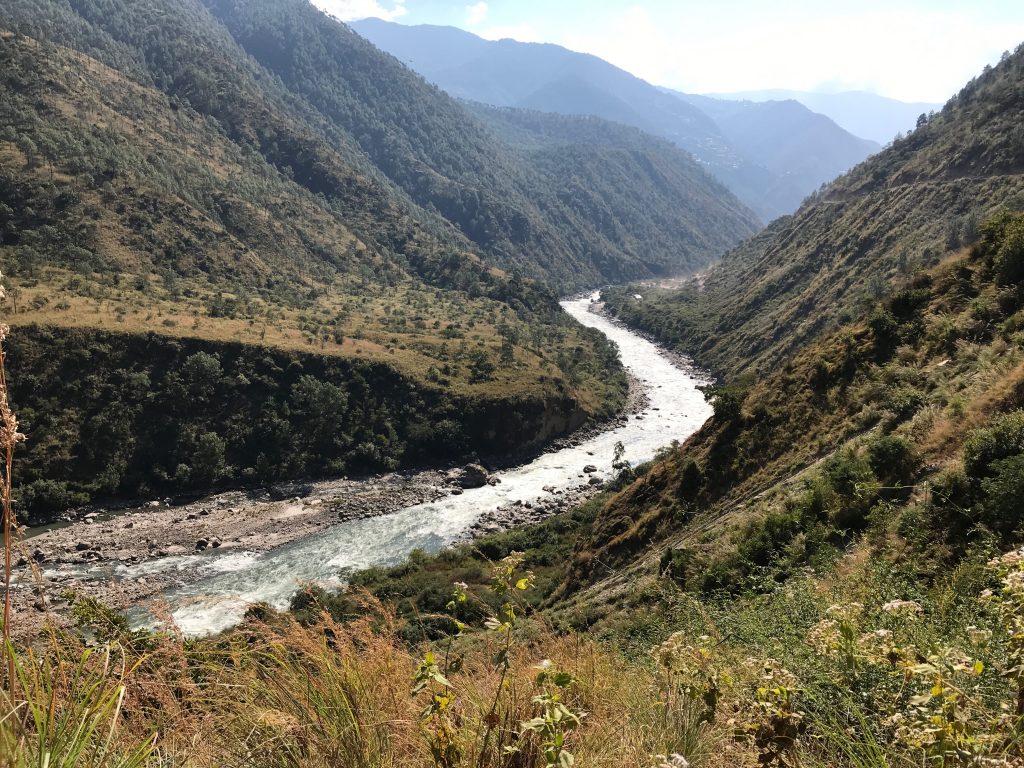
It also runs through rockfall territory, with some interesting effects:
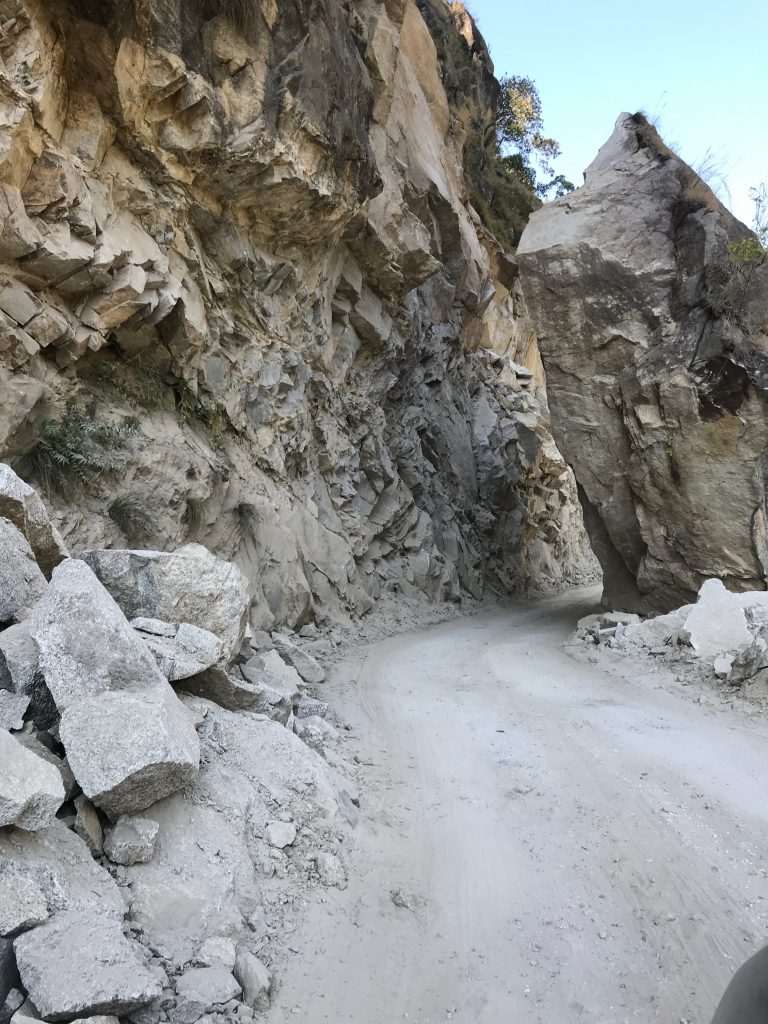
Our first stop outside of Trashigang district was Gomphu Kora, a monastery by the river, built on the site where Guru Rinpoche meditated and did battle with various demons.
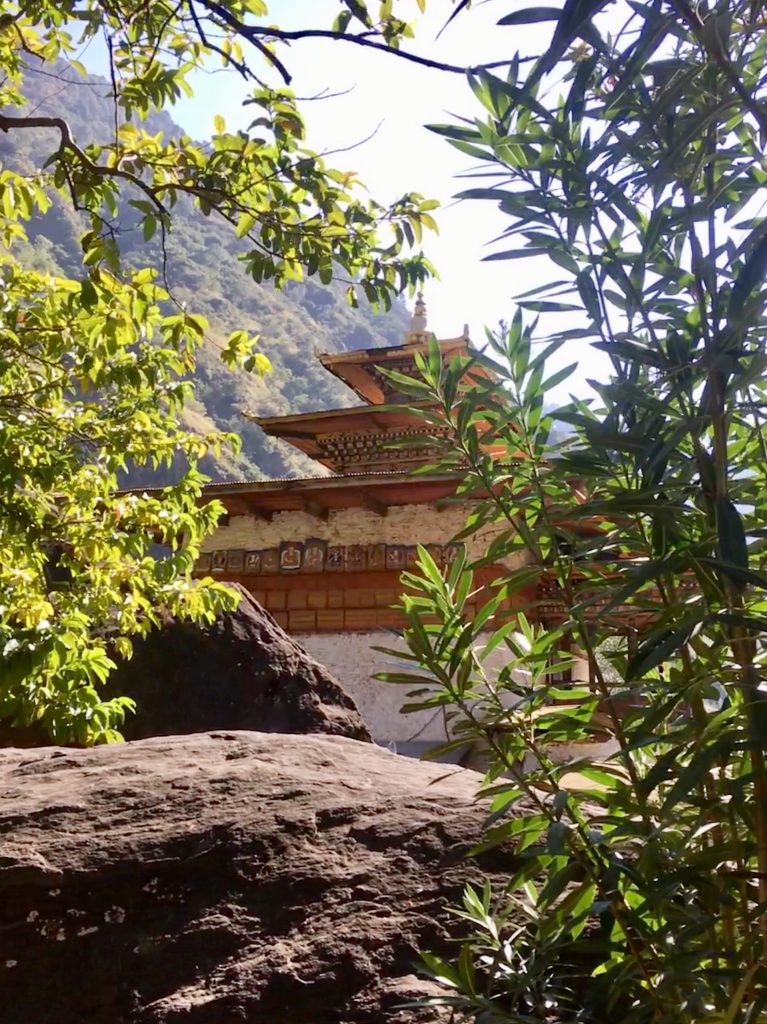
We weren’t wearing national dress, so Jeremy, Zoë, and I were reluctant to go into the monastery grounds, but James went down and found a monk who said we were permitted even in Western clothes. Two young monks did their best to show us around, a little hampered by our linguistic hurdles.
Most of the images we took were actually in the form of video–and of course the inside of the temple is out of bounds for photographers. The temple itself contained statues not only of Guru Rinpoche, the Zhadrung, and the Buddha, but also Chana Dorji with the exploded eleven heads. And the relics included footprints in stone (I think Guru Rinpoche and Pema Lingpa, but maybe others too), as well as other natural history treasures. The wooden steps were so smoothed with age and oil that they seemed wet in the morning sun.
We went around the temple to see the virtue-testing stone. If your karma is good, you will be able to climb the stone face. James attempted it and an older Bhutanese man tried to give him a helping hand, but to no avail. The path winds around the stone, past markers of various supernatural encounters: a demon buried under a stone here, the mark of a demonic serpent on the rock there.
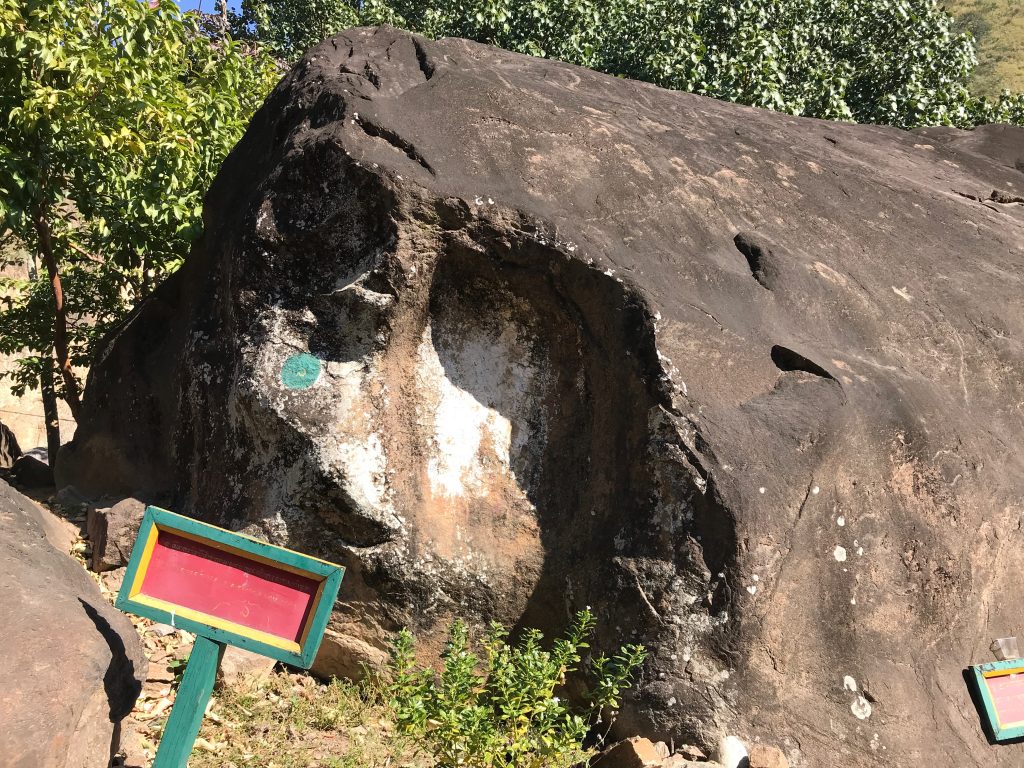
We proposed letting Jeremy try slithering through the karmic tunnel, but our monk guide did not advise it and the passage did seem especially tiny.
The light filtering through the leaves of the central tree was quite magical, as was the quiet sense of community: old people and babies spinning prayer wheels, chickens in the field around the monastery, a woman twisting wicks for butter lamps.
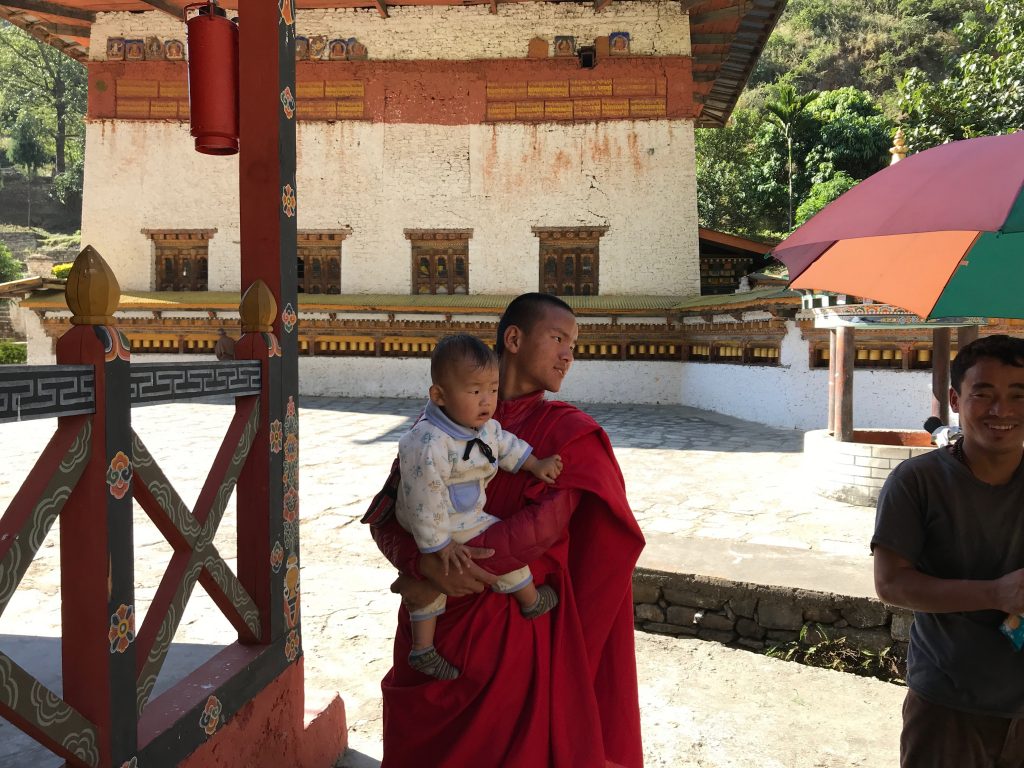
After touring the monastery, we went up the hill to try to find the cave where Guru Rinpoche is said to have meditated for three years, but our moral compasses were not working well. We did manage to find a chorten overlooking the monastery: ample reward for our efforts.
